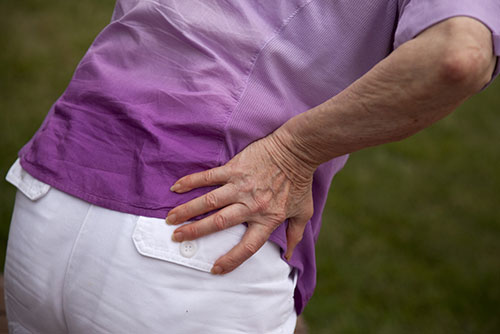What is osteoporosis?
Osteoporosis is a disease in which the bones become fragile and brittle. They fracture more easily than normal bone. Even a minor bump or fall can cause a serious fracture. Half of all women and one-third of men over 60 in Australia will have a fracture due to osteoporosis.
What is osteoporosis?
 Osteoporosis as a disease is characterised by low bone mass and micro architectural deterioration of bone tissue, leading to increased bone fragility and a consequent increase in fracture risk.
Osteoporosis as a disease is characterised by low bone mass and micro architectural deterioration of bone tissue, leading to increased bone fragility and a consequent increase in fracture risk.
One in three women and one in twelve men over 50 years of age are affected.
They fracture more easily than normal bone. Even a minor bump or fall can cause a serious fracture. Half of all women and one-third of men over 60 in Australia will have a fracture due to osteoporosis.
- Osteoporosis and fractures are major causes of injury, long-term disability and even death in older Australians.
- One fifth of people who suffer a hip fracture will die within six months.
- Of those who do not die, 50 per cent will be unable to walk without help or stay in their own homes.
- Some may even need full-time nursing care.
Osteoporosis is often called a silent disease, as there are usually no signs or symptoms until someone has a fracture. Any bone can be affected but the most common are bones in the hip, spine, wrist, ribs, pelvis and upper arm.
Menopause and osteoporosis
Menopause means the time around which a woman has her last period. Most Australian women reach menopause between the ages of 45-55, but it can happen earlier.
From about the age of 45 years, women may begin to lose bone at the rate of about 1-2% per year. This is because women’s bodies usually make less oestrogen at this age. After menopause, oestrogen levels keep decreasing, and this speeds up bone loss to about 2-4% per year, especially in the first 5-10 years after menopause. This stage of bone loss caused by menopause may last up to 15-20 years. All women lose bone at menopause. The amount varies, but some can lose as much as 30% of their bone during those years. If you have an early menopause for some reason, you will begin to lose bone at an earlier age.
The male hormone, testosterone, does not decrease suddenly like oestrogen does in women during menopause.
The health of your bones depends on:
- Your genes (60-80%)
- The level of hormones in your body. In women this hormone is oestrogen; in men it is the hormone testosterone.
- How physically active you are
- What you eat
These things affect how well bones form in early adulthood when your bones are at their strongest. After the 30s, it is important to maintain bone strength and prevent bone loss.
Risk factors for osteoporosis
Risk factors for osteoporosis and fractures caused by osteoporosis are similar in women and men. They include some things that you can change, and some that you can not.

